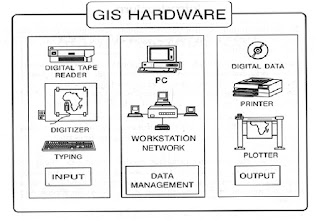Audio-Visual
The term audio-visual (AV) may refer to works with both a sound and a visual component, the production or use of such works, or the equipment involved in presenting such works. Films and television programs are examples of audio-visual presentations.
Business presentations are also usually audio-visual. In a typical presentation, the presenter provides the audio by speaking, and supplements it with a series of images projected onto a screen, either from a slide projector, or from a computer connected to a projector using a presentation program (software).
The term audio-visual is used usually as industry jargon, expressing works with a type of visual and/or audio format. In the developed world, there has been a huge uptake of computer-based audio-visual equipment in the education sector, with many schools and higher educational establishments installing projection equipment and often using interactive whiteboard technology.
Audio-visual consists of i-Pods,MP3, MPEG etc.
MPEG:
Moving Picture Experts Group, and pronounced m-peg. MPEG is a working group of the ISO . The term also refers to the family of Digital video compression standards and file formats developed by the group. MPEG generally produces better-quality video than competing formats, such as Video for Windows, Indeo and QuickTime. MPEG files previously on PCs needed hardware decoders (codecs) for MPEG processing. Today, however, PCs can use software-only codecs including products from RealNetworks, QuickTime or Windows Media Player.
The major advantage of MPEG compared to other video and audio coding formats is that MPEG files are much smaller for the same quality. This is because MPEG uses very sophisticated compression techniques
The MPEG compression methodology is considered asymmetric as the encoder is more complex than the decoder.MPEG algorithms compress data to form small bits that can be easily transmitted and then decompressed. MPEG achieves its high compression rate by storing only the changes from one frame to another, instead of each entire frame. The video information is then encoded using a technique called Discrete Cosine Transform (DCT). MPEG uses a type of lossy compression, since some data is removed. But the diminishment of data is generally imperceptible to the human eye.
The major MPEG standards include the following:
The major MPEG standards include the following:
MPEG-1: The most common implementations of the MPEG-1 standard provide a video resolution of 352-by-240 at 30 frames per second (fps). This produces video quality slightly below the quality of conventional VCR videos . The first MPEG compression standard for audio and video. It was basically designed to allow moving pictures and sound to be encoded into the bitrates of a Compact Disc. It is used on Video CD, SVCD and can be used for low-quality video on DVD Video. It was used in digital satellite/cable TV services before MPEG-2 became widespread.
MPEG-2: Offers resolutions of 720x480 and 1280x720 at 60 fps, with full CD-quality audio. This is sufficient for all the major TV standards, including NTSC, digital satellite TV services like Dish Network, digital cable television signals and even HDTV. MPEG-2 is used by DVD-ROMs. MPEG-2 can compress a 2 hour video into a few gigabytes. While decompressing an MPEG-2 data stream requires only modest computing power, encoding video in MPEG-2 format requires significantly more processing power.
MPEG-3: Was designed for HDTV but was abandoned in place of using MPEG-2 for HDTV.
MPEG-4: Coding of audio-visual objects means A graphics and video compression algorithm standard that is based on MPEG-1 and MPEG-2 and Apple QuickTime technology. Wavelet-based MPEG-4 files are smaller than JPEG or QuickTime files, so they are designed to transmit video and images over a narrower bandwidth and can mix video with text, graphics and 2-D and 3-D animation layers. MPEG-4 provides the standardized technological elements enabling the integration of the production, distribution and content access paradigms of Digital television, Interactive graphics applications, and interactive multimedia. MPEG-4 supports Intellectual Property Management and Protection (IPMP), which provides the facility to use proprietary technologies to manage and protect content like digital rights management.
MPEG-7: Formally called the Multimedia Content Description Interface, MPEG-7 provides a tool set for completely describing multimedia content. MPEG-7 is designed to be generic and not targeted to a specific application.
MPEG-21: Includes a Rights Expression Language (REL) and a Rights Data Dictionary. Unlike other MPEG standards that describe compression coding methods, MPEG-21 describes a standard that defines the description of content and also processes for accessing, searching, storing and protecting the copyrights of content. MPEG-21 Multimedia Framework initiative that aims to enable the transparent and augmented use of multimedia resources across a wide range of networks and devices.
(
This article is the topic of unit "IT Trends" from Nagpur University syllabus MBA 3 rd Sem IT notes.
Topics of this unit are is covered in other blog post. Links are given below.
(
This article is the topic of unit "IT Trends" from Nagpur University syllabus MBA 3 rd Sem IT notes.
Topics of this unit are is covered in other blog post. Links are given below.
For more notes you can also refer to other links as given below
)




